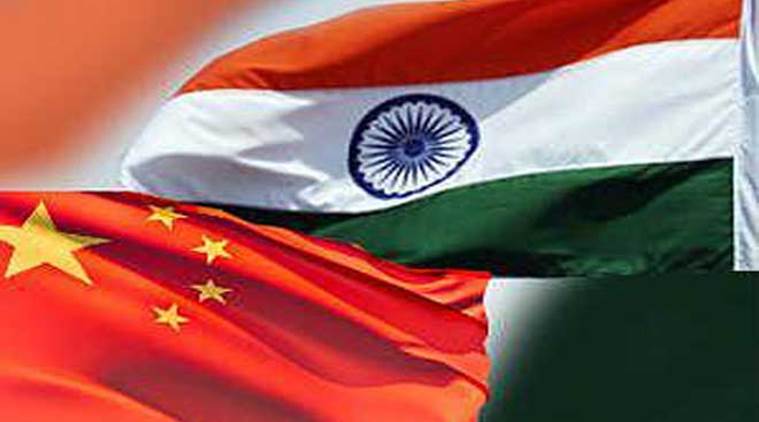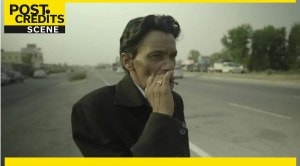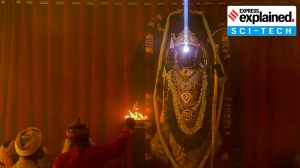- India
- International
Doklam standoff: Explaining two months of tensions between India and China
Sikkim standoff: Softening her previous stand, External Affairs Minister Sushma Swaraj on Thursday said the border stand-off with China cannot be resolved through a war but can be settled through bilateral talks.
 Doklam standoff: The Sikkim section has a special historical background and this is the only defined boundary between China and India, said Chinese Foreign Ministry spokesman Geng Shuang
Doklam standoff: The Sikkim section has a special historical background and this is the only defined boundary between China and India, said Chinese Foreign Ministry spokesman Geng Shuang
The Doklam standoff began in mid-June when India accused China of constructing a road in the disputed territory towards Doklam plateau, an objection that the Royal Bhutanese Army also raised. Doklam is a tri-junction between India, Bhutan and China. India intervened in the crisis, supporting Bhutan’s stand and asking China to halt its construction work. China claimed Doklam as its territory and soon there was a standoff between the Indian and Chinese troops, with both of them sending reinforcements at the border area. In the wake of the stand-off, the pilgrimage to Kailash Mansarovar was cancelled. Located at an altitude of 15, 160 feet, the yatra is considered holy to Hindus, Buddhists and Jains. It takes place between June and September.
Doklam standoff: Terse verses
On June 30, the People’s Liberation Army (PLA) spokesperson Col Wu Qian warned Army chief General Bipin Rawat to “stop clamouring for war”, dismissing the latter’s remarks that India was ready for a “two-and-a-half front war” as “extremely irresponsible”. PLA spokesperson Col Wu Qian told reporters: “We hope that the particular person in the Indian Army could learn from historical lessons and stop such clamouring for war.” In response to this, Union Defence Minister Arun Jaitley hit back at Beijing and asserted that the India of 2017 is different from what it used to be 55 years ago. “If they are trying to remind us, the situation in 1962 was different and India of 2017 is different,” Jaitley said.
Asking India to withdraw, China said the “trespassing” of Indian troops in Doklam was a “betrayal” of a treaty signed in 1890, and India had used Bhutan as an “excuse” to violate the international border between the two countries. A day before the G20 summit was supposed to begin in Hamburg, Germany, China dismissed the prospect of a meeting between Chinese president Xi Jinping and PM Narendra Modi, saying the “atmosphere is not right for a bilateral meeting”. China once again demanded the withdrawal of Indian troops, citing it as a “pre-condition” for any talks to take place between the two countries.
With the stand-off continuing for over a month, Minister for External affairs Sushma Swaraj said in Parliament that India has the support of “all countries”. Swaraj also demanded both countries to withdraw their troops in order to have a conversation on the issue. In response to Swaraj’s comment, Chinese media mouthpiece Global Times said she had “lied” in the Parliament. It also warned of China resolving the “conflict through non-diplomatic means”, highlighting the military strength of the Chinese forces. “The China-India border area may become a stage where China showcases the achievement of its long-term military development and reforms,” it said.
Doklam standoff: NSAs meet
On the sidelines of the BRICS summit, National Security Advisor Ajit Doval met Chinese State Councillor Yang Jiechi and held talks which Beijing said included “major problems” and “regional issues”. The two sides have remained tight-lipped about what was discussed in the meeting. After meeting National Security Advisors (NSAs) of BRICS countries, Chinese President Xi Jinping praised their efforts in enhancing mutual trust and cooperation. Doval said “vital” issues discussed at the meeting of the NSAs and its outcome will have an “impact” on the main summit in September.

At an event marking the 90th anniversary of People’s Liberation Army, Chinese President Xi Jinping said China has the “confidence to defeat all invasions”. “No one should expect us to swallow the bitter fruit that is harmful to our sovereignty, security or development interests,” he added. Though his comments did not point to anyone in particular, their timing seemed to them being directed at India.
Last week, reports emerged of Chinese soldiers making a brief transgression into Indian territory at the Barahoti area in Chamoli district in Uttarakhand on July 25. According to sources, this was the second such incident in the region this month — the first was on July 15. Sources said 15-20 soldiers came in at each time.
Doklam standoff: Perceived softening of stand
Softening her previous stand, External Affairs Minister Sushma Swaraj on Thursday said the border stand-off with China cannot be resolved through a war but can be settled through bilateral talks. “We will keep patience to resolve the issue,” she said, adding that India will engage with China to resolve the dispute. Acknowledging china’s contribution to India’s economic growth, she said, “China has contributed to our growing economic strength. For them, there’s a lot at stake, risk here. They have been awarded many contracts.”
A day after Swaraj’s comments, Chinese Consul General in Kolkata, Ma Zhanwu, said that “shared interests’’ between the two countries “far outweigh any differences’’ and India and China need to resolve the issue through “rational, objective and constructive means.”
“In relationships between nations, there are always differences. It is like belonging to a family with many brothers and sisters. There can be differences between siblings and even parents. If there are such differences between two brothers, that does not mean that they cannot get along. You don’t stop dealing with that brother, with whom you have differences, on other issues,’’ Ma said.
Best of Express
Apr 18: Latest News
- 01
- 02
- 03
- 04
- 05





























